Trending
Opinion: How will Project 2025 impact game developers?
The Heritage Foundation's manifesto for the possible next administration could do great harm to many, including large portions of the game development community.
Completing the analysis of the solo, 48-hour Ludum Dare project, The Sentient Cube, I provide an in-depth post of each game design decisions I made in every level, and why.

[Cross posted from Omiya Games blog]
Here’s a dump of all the design decisions I’ve made on The Sentient Cube.
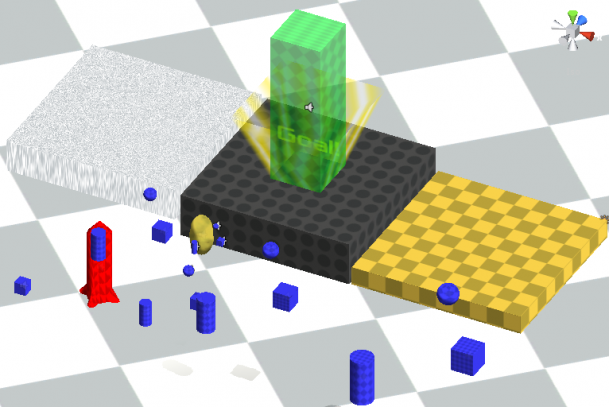
First, the debug level. Always gotta have one for Unity. It’s a great place to create prefabs, and tweak the numbers to apply to the rest of the levels. Also a great place to test stuff, like the water block (top-left), unattainable block (top), bouncy block (top-right, unused in game), ice block (not shown), and rocket boosters (red, left).
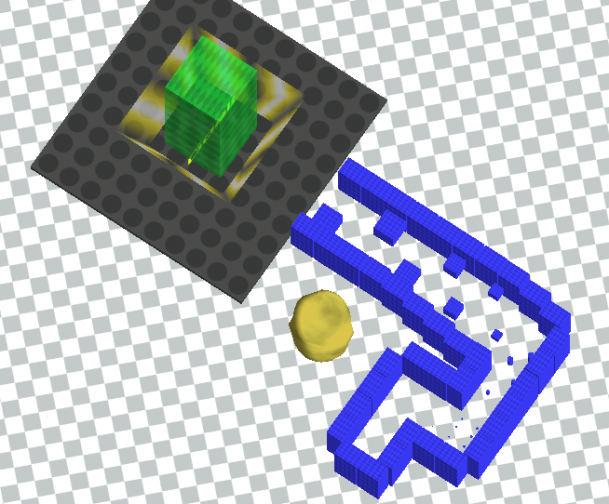
How to Play was a nasty one. The first curve is there to give a clear and empty view for the player to practice the controls. It also puts the Goal out of view, making it easier for me to teach the basic objective of the game: collect smaller objects. The first bend is where I scatter the smallest objects, and provide the instructions to roll into them. I’ve put a lot of objects there to show them lighting up as you get bigger.
Proceeding forward, I have this weird bend that stretched all the way to the left. The straight-way itself is intended to let the player practice collecting bigger objects, in a true breadcrumb fashion. It’s also here that I mention the arrow at the top of the screen, that it indicates where the goal is (straight ahead). It’s worth mentioning that I call this bend “weird” because it was also intended to hide a problem: Unity’s default GUI shader draws over all other objects. By placing it to the far-left, the player wouldn’t see the text at the beginning of the level. The shader that corrects this weird overlap is openly available online, but to respect Compo rules, I didn’t copy this shader; I merely hid it.
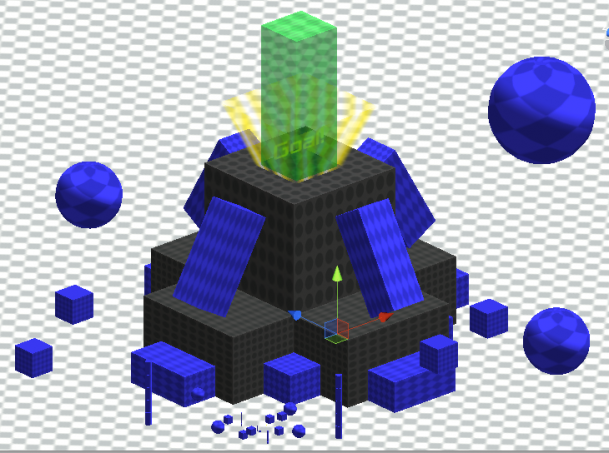
Level 1 was actually the second level I created, code-named “pyramid.” This level simply acts like a practice level, where the goal was clearly above you, and the objective was simple get large enough to be able to climb up the steps. The bouncing spheres was a small challenge I’ve added to make things a little more interesting, i.e. you have to time it correctly to obtain each sphere. Past that, it’s a pretty generic Katamarilevel.
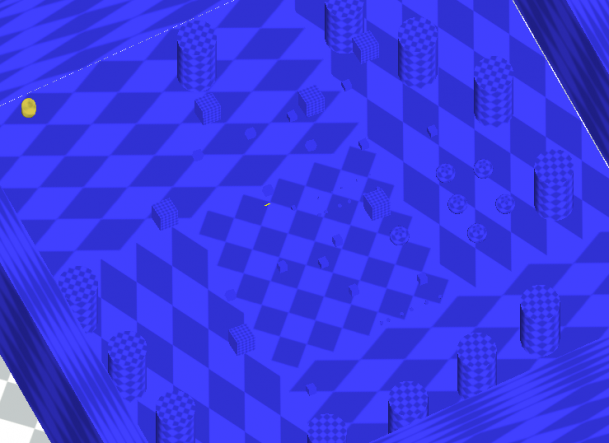
In Level 2, I wanted to establish that the Goal could be anywhere. In this level’s case, directly below you! This was actually the first level I created, and you can tell from the knocked over objects I really just zoomed through this. It was the first place, though, where I got a good handle on the amphitheater formation.
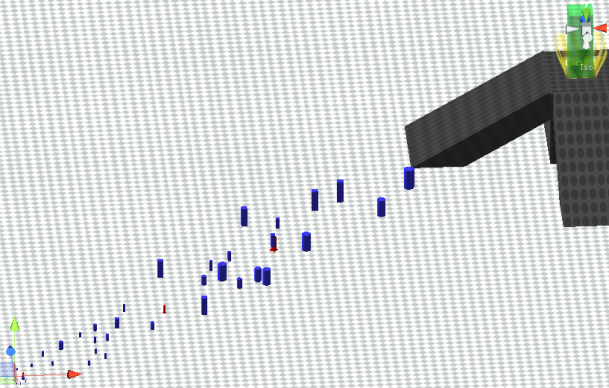
In Level 3, I introduce the rockets! I initially intended the rockets to help you fly upwards, but that was nearly impossible to do with the given control scheme. Instead, I found it useful to traverse great distances due to its added speed, and decided to do a level designed to demonstrate just that. To acknowledge that players may simply wants to play around with the rockets, I placed slopes around the Goal to make it easier for them to reach it.
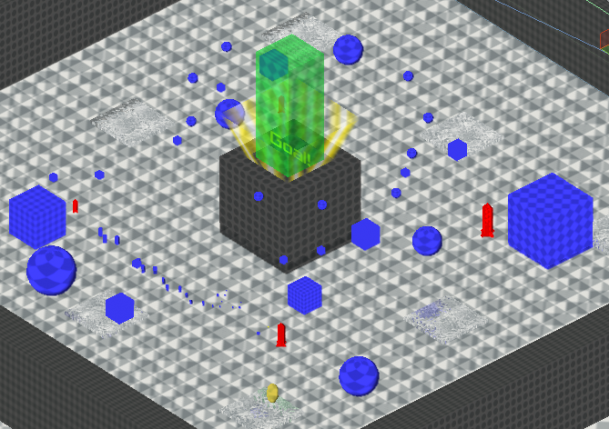
In Level 4, I introduce the water block and the ice block rather haphazardly. This was the last level I created, and I simply had very little time left, so I dumped every new assets I had into it. The walls surrounding the ice is there to prevent both you and the objects you’re trying to stick from falling out, making it easier to collect things. The objects are placed almost randomly, partly because of the chaotic nature of the ice-block. The water blocks were intended for helping you adjust your controls, but in the end, they ended up being pretty useless.
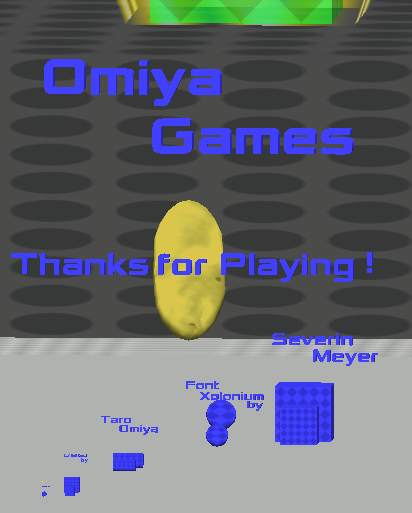
And the Credits. This was actually hard to design, mainly due to tweaking the size of the breadcrumbs so you can definitely grab each text. Other than that, it’s intentionally a breadcrumb-to-breadcrumb level with no other purpose than, well, providing the credits.
Interested? Try The Sentient Cube here, and please rate the game!
Read more about:
BlogsYou May Also Like